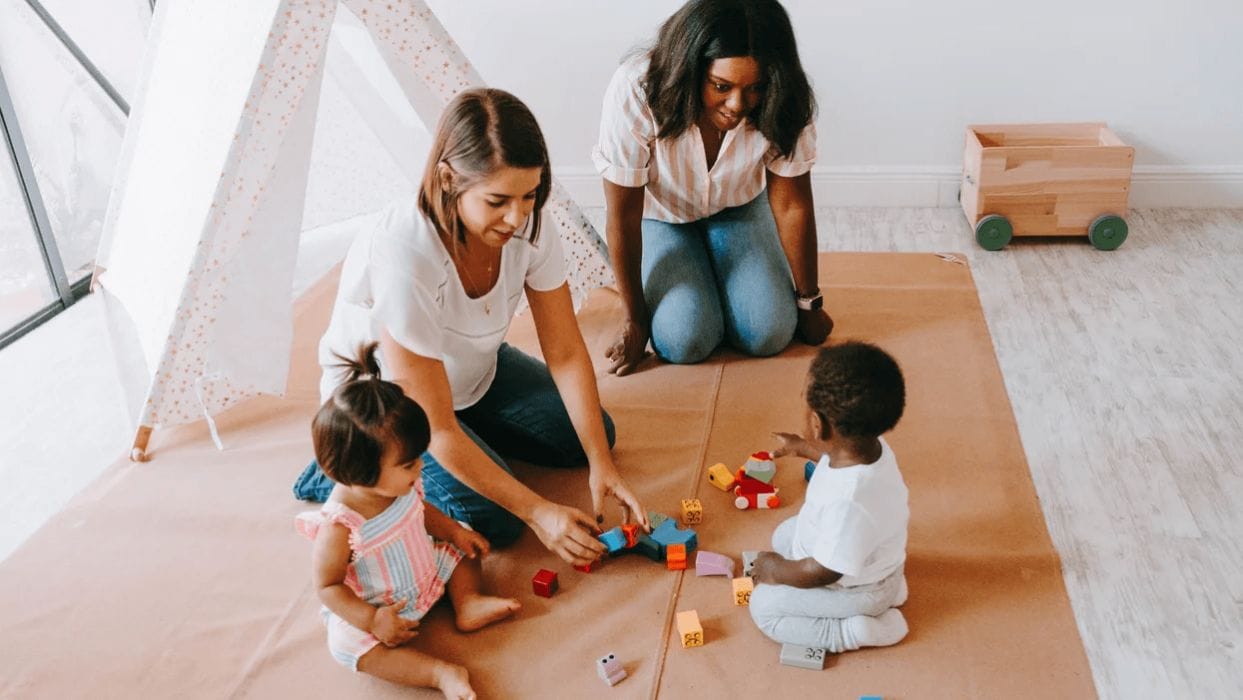Why unstructured play is critical for brain development

Motherly for People Toy Company
Critical and oh-so-fun—here are 5 reasons to let kids loose and watch them learn.
A version of this story was originally published on June 16, 2021. It has been updated.
Table of Contents
Unstructured play is play without predetermined rules of the game. There are no organized teams, uniforms, coaches or trainers. It is spontaneous, often made-up on the spot, and changeable as the day goes on. It is the kind of play you see when puppies chase each other around a yard in endless circles or a group of kids play for hours in a fort they created out of old packing boxes.
Unstructured play is fun—no question about it—but research also tells us that it is critically important for the development of children’s bodies and brains.
One of the best ways to encourage unstructured play in young children is by providing open-ended toys, or toys that can be used multiple ways.
Here are 5 reasons why unstructured play is crucial for children
1. It changes brain structure in important ways
Sergio Pellis, PhD, an expert on the neuroscience of play notes that play actually changes the structure of the developing brain in important ways, strengthening the connections of the neurons (nerve cells) in the prefrontal cortex, the area of the brain considered to be the executive control center responsible for solving problems, making plans and regulating emotions.
Because unstructured play involves trying out different strategies without particular goals or serious consequences, children and other animals get to practice different activities during play and see what happens. When Dr. Pellis compared rats who played as pups with rats who did not, he found that although the play-deprived rats could perform the same actions, the play-experienced rats were able to react to their circumstances in a more flexible, fluid and swift fashion.
Their brains seemed more “plastic” and better able to rewire as they encountered new experiences.
Experts say that unstructured play teaches us how to deal with the unexpected—a critically important skill in today’s uncertain world.
Related: It’s science: Preschool play protects your child’s health later in life
2. Play activates the entire neocortex

We now know that gene expression (whether a gene is active or not) is affected by many different things in our lives, including our environment and the activities we participate in. Jaak Panksepp, Ph.D., a Professor at the University of Washington studied play in rats earning him the nickname of the “rat tickler.”
He found that even a half hour of play affected the activity of many different genes and activated the outer part of the rats’ brains known as the neocortex, the area of the brain used in higher functions such as thinking, language and spatial reasoning. We don’t know for sure that this happens in humans, but some researchers believe that it likely does.
Related: It’s OK for your child to play alone
3. It teaches children to have positive interactions with others

It used to be thought that animal play was simply practice so that they could become more effective hunters. However, Dr. Panksepp’s study of play in rats led him to the conclusion that play serves an entirely different function: teaching young animals how to interact with others in positive ways. He believed that play helps build pro-social brains.
4. Children who play are often better students

The social skills acquired through play may help children become better students. Research has found that the best predictor of academic performance in the eighth grade was a child’s social skills in the third grade. Dr. Pellis notes that “countries where they actually have more recess tend to have higher academic performance than countries where recess is less.”
Related: How to turn a playroom into a preschool classroom
5. Unstructured play gets kids moving

We all worry that our kids are getting too little physical activity as they spend large chunks of their time glued to their electronic devices with only their thumbs getting any exercise. Unstructured play, whether running around in the yard, climbing trees or playing on commercial play structures in schools or public parks, means moving the whole body around.
Physical activity helps children maintain a healthy weight and combats the development of type 2 diabetes—a condition all too common in American children—by increasing the body’s sensitivity to the hormone insulin.
It is tempting in today’s busy world for parents and kids to fill every minute of their day with structured activities—ranging from Spanish classes before school to soccer and basketball practice after and a full range of special classes and camps on the weekends and summer vacation. But it’s important to remember to carve out time for unstructured play; time for kids to get together with absolutely nothing planned and no particular goals in mind—except having fun.






































